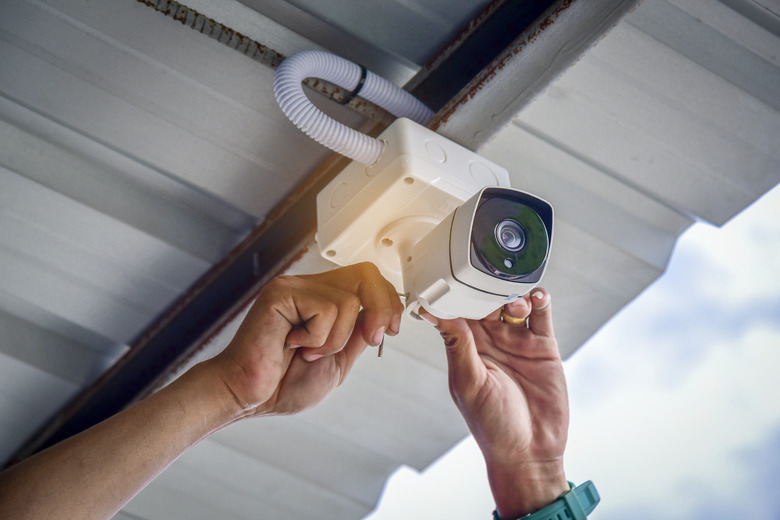How To Troubleshoot CCTV With No Signal On The Monitor
We may receive a commission on purchases made from links.
Modern CCTV (closed circuit television) cameras are very reliable, but sometimes they can fail. Although other factors may contribute to camera failure, the most common causes are wiring issues. Fortunately the wiring of a CCTV camera is fairly simple. The camera requires a positive voltage, a negative voltage or ground, and a 75-ohm cable to deliver the signal to the monitor.
Things Needed
-
Voltmeter or multimeter
-
RG-59 connectors (if you have a bad connector)
-
RG-59 crimper (if you have a bad connector)
How to Troubleshoot CCTV
1. Check the Equipment Settings
Check your monitor, recorder, and camera for the proper settings.
2. Check the Power Supply Voltage
Check the voltage at the power supply using a voltmeter. You should have approximately 12 volts DC or 24 volts AC, depending on the type and age of the camera (check the label on the power supply for the correct supply voltage). Inspect the connectors and wires at each step for corrosion, broken wires, and bad connectors. Replace any defective connectors. If you do not have voltage at the power supply, you have a bad power supply.
3. Check the Camera Voltage
Check the voltage at the camera for the correct power supply voltage. If you do not have the correct voltage at the camera, you have a bad cable or wire coming from the power supply.
4. Check the Camera Signal
Disconnect the RG-59 cable at the camera and ensure you have a 1-volt peak-to-peak signal coming from the camera. This will be a voltage of approximately 0.707 volts AC if you have a standard RMS (root mean square) voltmeter. If you do not have the correct voltage coming from the camera, you have a bad camera or connector. Reconnect the connector.
5. Check the RG-59 Connector
Disconnect the RG-59 connector coming from the camera to your monitor or video recorder. Make sure you have a 1-volt peak-to-peak (approximately 0.707 AC volts for a RMS meter) signal coming from the camera to the recorder. If you do not have the correct voltage coming from the camera, you have a bad cable or connector. Reconnect the connector.
Troubleshooting and Maintenance Tips
Troubleshooting and Maintenance Tips
CCTV systems are very simple systems, and they are easy to troubleshoot. If they're securely installed to avoid dings, falls, and other potentially damaging events, modern cameras should last for many years with proper maintenance. Most failures are caused by broken, frayed, or loose wires; corrosion in the connectors; and improperly assembled connectors.
Although the voltages in your CCTV system are too weak to cause a fatality, handle any electrical repairs carefully to avoid being shocked. At least once a month, check your camera for obstructions, dirt, and cobwebs (especially outdoor cameras); take a look at the wiring for obvious wear issues; and test your monitor and recorder for proper function. Additional tips include:
- Avoid using twist-on RG-59 connectors because they are not reliable.
- Instead of using wire nuts, use insulated butt splice connectors to connect power supply wires.
- Protect your RG-59 connectors and power supply connectors from corrosion and moisture by wrapping them in electrical tape.
- Hire a pro to do a comprehensive system checkup at least annually.
